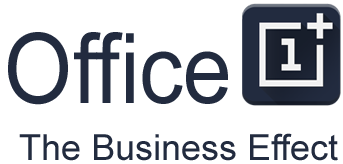Table of Contents
Introduction
Writing a proposal can be as daunting as facing a dragon. It’s not just about penning down your ideas; it’s about presenting them in a way that captures attention and convinces. Whether you’re pitching a project, a business idea, or seeking funding, mastering the art of proposal writing can make or break your success. Let’s dive into the essential tips for crafting a compelling proposal and the common pitfalls you should avoid.
Understanding Proposals
Before we get into the nitty-gritty of tips and mistakes, it’s crucial to understand what a proposal is. Essentially, a proposal is a document that outlines a plan or suggestion for a project or idea proposal tips and mistakes, aiming to persuade the reader to approve or support it. Think of it as your chance to shine a spotlight on your ideas and demonstrate why they’re worth investing in.
Why Proposals Matter
Proposals are the bridge between your idea and its realization. They’re not just paperwork; they’re a strategic tool used to secure approvals, funding, or partnerships. A well-crafted proposal can help you stand out from the competition and present your ideas in a clear, structured manner.
The Proposal Process
The proposal process typically involves several stages: planning, writing, revising, and submitting. Each stage is critical to ensure that your proposal is not only well-written but also effectively communicates your objectives and potential benefits.
Tips for Crafting an Effective Proposal
1. Know Your Audience
Before you even start writing, get to know your audience. Who will read your proposal? What are their interests and concerns? Tailoring your content to meet their expectations and address their needs can make a significant difference. It’s like talking to someone; you wouldn’t use the same approach with a friend as you would with a potential client.
2. Define Clear Objectives
Your proposal should have clear, well-defined objectives. What do you want to achieve? Whether it’s getting approval, securing funds, or gaining support, clarity is key. Ambiguity can leave your readers confused and less likely to engage with your proposal.
3. Research Thoroughly
Knowledge is power. Conducting thorough research ensures that your proposal is based on accurate and relevant information. This not only adds credibility but also shows that you’re well-informed and serious about your proposal.
4. Create a Strong Executive Summary
The executive summary is the first impression your proposal makes. It should be concise and compelling, summarizing the main points and capturing the essence of your proposal. Think of it as a movie trailer—give enough to entice without giving everything away.
5. Use Data and Evidence
Support your proposals with data and evidence. Whether it’s statistics, case studies, or testimonials, concrete evidence can strengthen your arguments and make your proposal more persuasive. It’s like proving your claims with solid proof rather than just talking about them.
6. Maintain a Professional Tone
A professional tone conveys seriousness and respect for the reader. Avoid overly casual language, slang, or informal expressions. However, this doesn’t mean your writing has to be stiff—just balanced and respectful.
7. Include a Clear Call to Action
Your proposal should have a clear call to action. What do you want the reader to do next? Whether it’s scheduling a meeting, approving a budget, or signing a contract, make it clear and straightforward.
8. Proofread and Edit
No proposal is complete without a thorough proofreading and editing process. Mistakes and typos can undermine your credibility. Take the time to review your proposal carefully or have someone else do it for you.
Common Proposal Mistakes to Avoid
1. Lack of Clarity
One of the biggest mistakes is a lack of clarity. If your proposal is confusing or ambiguous, it can frustrate the reader and lessen your chances of success. Ensure that your objectives, arguments, and solutions are presented clearly and logically.
2. Ignoring the Audience’s Needs
Failing to address the needs and concerns of your audience can be a major setback. Your proposal should resonate with the reader and address their specific needs or problems. Ignoring this can make your proposal seem irrelevant or disconnected.
3. Overloading with Jargon
Using too much jargon or technical language can alienate your audience. While some technical terms may be necessary, ensure that your proposal remains accessible and understandable to those who might not be familiar with your field.
4. Neglecting Proofreading
Errors in your proposal can detract from its professionalism and credibility. Always proofread and edit your document to eliminate mistakes and ensure a polished final product.
Lab made diamonds, also known as synthetic or cultured diamonds, are revolutionizing the gemstone industry with their blend of innovation and sustainability. Created using advanced technological processes that replicate the conditions under which natural diamonds form, these diamonds possess the same physical, chemical, and optical properties as their earth-mined counterparts.
5. Missing Deadlines
Submitting your proposal late can be as damaging as submitting a poorly written one. Ensure that you adhere to deadlines and manage your time effectively to avoid last-minute rushes.
How to Revise Your Proposal
Revising your proposal is an essential step. After drafting, take a step back and review it with fresh eyes. Look for areas where clarity can be improved, arguments strengthened, or formatting enhanced. Don’t be afraid to make significant changes if necessary. Sometimes, a thorough revision can turn a good proposal into a great one.
Conclusion
Crafting a proposal is both an art and a science. By understanding your audience, defining clear objectives, and avoiding common mistakes, you can create a compelling proposal that stands out. Remember, a well-written proposal is your ticket to turning ideas into reality, so take the time to perfect it. Whether you’re new to proposal writing or looking to refine your skills, these tips and insights will help you make a strong impression and achieve your goals.

